Love Your Home Again with These Simple Decor Ideas
As Seen in 55+ Plus Magazine
When Deborah Jeanne Sergeant, a journalist for 55+ Plus Magazine, contacted me to discuss simple, budget-friendly ways for homeowners to refresh their spaces, I knew we’d be diving into a topic near and dear to my heart.
I was honored to share my insights in the September/October 2024 issue, where we explored the importance of creating timeless, welcoming homes without the stress of a complete renovation.
If you haven’t had a chance to grab the latest issue, you can find it at local stores like Wegman’s or wellness centers around Rochester.
Below, I’ve expanded on the key points we discussed, including practical advice and additional tips that I used to prepare for the interview.
Whether you're looking to resolve design disagreements or simply want to refresh your space without breaking the bank, these ideas will help you love your home again.
Rochester's 55+ Magazine September/October 2024 issue Page 29. Featured designer: Julie Ann Rachelle Interiors LLC
Rochester's 55+ Magazine September/October 2024 issue Page 30. Featured designer: Julie Ann Rachelle Interiors LLC
Table of Contents:
No time to read it at this moment? Download it as a PDF to save and read later!
My Best Tips to Prevent Your Home from Looking Outdated
Creating a home that feels fresh and timeless can be tricky, especially when you're trying to navigate your own design preferences along with those of a partner. Over the years, I’ve seen so many clients feel stuck—frozen by indecision because they can’t agree with their spouse on something as simple as a paint color. But here’s the good news: You don’t need to agree on every little detail to achieve a beautiful home that reflects both of you.
Imagine walking into a space that feels warm, welcoming, and timeless. Picture yourself enjoying your home again without worrying about trends going out of style or feeling like the décor doesn’t represent either of you. By focusing on a few key updates—like accent walls, lighting, or sleek hardware—you can make a dramatic transformation without a complete overhaul.
Pro Tip: Prioritize What Matters to Both of You
When working with limited budgets and strong opinions, focus on the elements that truly matter. For some, that might mean keeping a well-loved sofa but updating everything around it. For others, it’s about creating a comfortable family gathering space. Whatever your priority is, start there and let that guide the rest of your decisions.
Key Elements for Timeless Interior Design
At the heart of any timeless design is the idea of quality over quantity. Investing in well-made pieces that stand the test of time is a lot like choosing a classic novel over a trendy magazine—you’ll return to it again and again.
Here’s how you can build a timeless home, even on a budget:
Durable Materials: Think of materials like solid wood, leather, and natural stone. These are like the backbone of a good home—sturdy, long-lasting, and only getting better with age. I’ve seen clients transform their spaces just by sticking with classic materials like leather, ceramic, and wool.
Functional Design: This isn’t just about how things look; it’s about how they work for you. Pieces should not only be beautiful but practical. One of the most iconic examples is the Eames Lounge Chair, a piece from 1956 that still looks fresh today because it marries comfort with style.
Classic Shapes: Clean, simple shapes are like a well-tailored suit or little black dress—they never go out of style. Mid-century modern pieces, for instance, have stayed relevant for decades because of their simplicity and functionality.
Blending Trends with Longevity
Incorporating trends in a way that won’t date your space is an art form.
Start with classic, durable furniture as the foundation, and sprinkle in trendy elements through easily replaceable items like pillows, rugs, and wall art.
For example, you might invest in a beautiful, timeless wooden dining table that will last for years.
But to give your dining room a modern touch, you could choose contemporary chairs or an eye-catching light fixture. This combination adds personality while keeping your space grounded in classic design.
Trends, on the other hand, are like the statement necklaces or handbags of your home.
They add a modern flair but don’t dictate the overall look.
These can be seasonal accessories—bold throw pillows, patterned rugs, or bright artwork—that bring energy to a room without committing you to a long-term style choice.
When blending trends with classic elements, think of your home’s design as a layered wardrobe.
Start with a neutral base: whites, grays, beiges, or earthy tones.
These are like a black suit in fashion—flexible and able to pair with anything.
Then, layer in trends through easy-to-change accessories like cushions or artwork.
Just like you’d swap out a scarf or jewelry to refresh an outfit, you can replace these elements seasonally to keep your home feeling updated without sacrificing its timeless core.
Materials and Finishes that Stand the Test of Time
Certain materials are known for their ability to age gracefully and remain stylish for decades. Here are some of my go-to choices:
Leather
Leather furniture is an investment that pays off over time.
Whether it’s a Chesterfield sofa or the iconic Knoll Barcelona Chair, leather develops a rich patina as it ages, enhancing its beauty.
A well-worn leather sofa or ottoman adds sophistication and charm to any living space.
Ceramic and Porcelain
Timeless tiles, such as classic white subway tiles, Moroccan mosaics, or large-format porcelain tiles, remain popular choices for kitchens, bathrooms, and floors.
These materials are durable and versatile, offering a timeless aesthetic that can easily adapt to different styles.
Wool
When it comes to rugs and textiles, wool is a reliable choice.
Persian rugs, for instance, are timeless due to their intricate patterns and durable construction.
A hand-knotted wool rug adds warmth and character to a room and lasts for generations.
No time to read it at this moment? Download it as a PDF to save and read later!
Common Design Mistakes That Can Make a Home Look Outdated
Certain design choices can quickly make an interior feel dated. Avoid these pitfalls to keep your home looking current and stylish:
Overuse of "Grey": Once popular, this grey hue has become overdone and often makes a space feel bland. Instead, opt for warmer, richer tones.
Stark White Walls: Instead of stark white, choose mid-tones or soft beige tones that add warmth without overwhelming the room.
Mismatched Metals: Mixing too many metal finishes can create a chaotic look. Stick to two complementary metals, like brass and matte black, for a harmonious design.
Oversized Furniture: Furniture that’s too large for a space can make a room feel cluttered and dated. Scale back on oversized pieces or use one as a statement, surrounded by more proportional items.
Updating Your Space Without a Complete Renovation
You don’t need to undergo a full renovation to refresh your home. Focus on creating or enhancing a focal point to bring new life to a room.
Case Study: A Living Room Makeover
In a recent project, my client’s living room felt disjointed due to multiple competing focal points.
We simplified the design by painting the fireplace surround a striking black to create contrast and make it the star of the room.
Paired with a light terracotta hue on the walls and a matching color scheme with the furniture, the space transformed into a modern yet cozy retreat—without the need for a full overhaul.
***Step-by-Step Design Strategy***
We focused on simplifying the room's design and creating a clear focal point. Here's how we approached the transformation:
1. Eliminate Competing Focal Points
Fireplace: The existing white fireplace surround didn't stand out and competed with the navy blue accent wall for attention. To solve this, we decided to shift the focus to the fireplace.
2. Use Bold Colors to Highlight Architectural Features
Paint the Fireplace Surround Black: By choosing a striking black for the fireplace surround, we instantly highlighted its architectural details. The bold color created contrast and drew attention to the fireplace as the primary feature of the room.
3. Harmonize the Color Palette
Built-ins and Trim: We repainted the built-ins and trim in a creamy white, creating a softer contrast with the bold black surround.
Wall Color: The beige walls were replaced with a light terracotta hue, bringing warmth to the room while maintaining neutrality.
***The Power of Color Matching and Psychological Impact***
Matching the Black to the New Furniture
We carefully matched the black color of the fireplace surround to the client’s new black leather living room furniture, ensuring visual unity throughout the space.
The Psychological Shift
Calmness and Sophistication: The updated color palette immediately brought a sense of calm and sophistication to the room.
Visual Contrast: The interplay between the creamy white trim and the black surround created a stunning visual contrast that made the space feel both modern and cozy.
***Key Takeaways for Homeowners***
Focus on One Main Element: A focal point, like a fireplace or a bold wall, can transform the entire room without a full overhaul.
Use Contrast Wisely: Pairing light and dark colors can add depth and drama to a space.
Color Match to Existing Furniture: Tying new elements to existing furniture helps maintain cohesion.
By following these simple yet effective steps, homeowners can refresh their spaces and achieve a completely new feel without undergoing an extensive renovation.
Practical Solutions for Working Within a Budget
I know that sticking to a budget can feel overwhelming. But by being strategic, you can make a big impact without overspending:
Reupholster Instead of Replace
One client wanted a new look for her family room but needed to stay within a $5,000 budget. Instead of replacing her entire sofa set, we reupholstered her existing chairs, keeping her Ethan Allen leather sofa. We lightened the room with a soft beige paint and added affordable accessories like rugs and décor from Home Goods. The result was a refreshed, modern space for a fraction of the cost.
Repurpose Existing Furniture
Another client needed to convert her garage into a gathering space. By repurposing her console table that extends to a long dining table and adding an oversized floral mural, we created a multifunctional space for entertaining without major renovations.
Quick Tip: Start with smaller, impactful changes like updating lighting, reupholstering, or adding bold art pieces. These tweaks can refresh your space without a complete makeover.
Final Thoughts: Embrace Your Unique Style
At the end of the day, the best way to keep your home feeling fresh and timeless is to make design choices that resonate with you.
Rather than chasing fleeting trends, let your home reflect your personal taste and style.
Decorate in a way that feels authentic and true to you, just as you would choose a favorite book or an outfit that makes you feel confident.
By following these principles, you can create a home that feels welcoming, stylish, and uniquely yours—today and for years to come.
Download it as a PDF to save and read later!
View FAQ’s below.
Related Reading:
FAQs
How do I make my home look timeless?
To achieve a timeless look, focus on neutral color palettes, high-quality, durable materials like wood, leather, and stone, and furniture with simple, classic shapes.
Incorporate trends through accessories that are easy to change.
What are some affordable ways to update my home?
Start by adding or changing accents like throw pillows, rugs, and artwork.
Focus on creating a focal point, such as a bold accent wall or an updated light fixture, for maximum impact without a full renovation.
What materials are best for timeless home design?
Durable, natural materials like solid wood, leather, stone, ceramic, and wool are ideal.
They age beautifully and retain their appeal over time, making them excellent long-term investments.
How can I balance trends with a timeless design?
Use trendy items in small doses—think throw pillows, blankets, or artwork.
Keep larger pieces like furniture classic, and update accessories as trends change to maintain a fresh look without overhauling your entire space.
What are common design mistakes that can make a home look outdated?
Overusing neutral colors like greige, mismatching metals, using oversized furniture, and pushing all furniture against the walls can make a space feel dated.
Stick to a balanced, proportional layout with a mix of classic and modern elements.
How do I refresh my home without a complete renovation?
Focus on small but impactful changes, like updating lighting fixtures, adding a bold accent wall, or creating a new focal point.
Refresh textiles and accessories for a cost-effective way to update your home’s style.
Resources
Books on Timeless Interior Design:
"Beautiful: All-American Decorating and Timeless Style"
Author: Mark D. Sikes
Overview: This New York Times bestseller celebrates the timeless elegance of American style, blending classic and modern design elements. Sikes is known for his crisp, all-American aesthetic that never goes out of fashion.
Why Timeless: Sikes emphasizes the use of enduring color schemes like blue and white, neutral tones, and natural materials, creating spaces that feel chic yet grounded in tradition.
APA Citation:
Sikes, M. D. (2016). Beautiful: All-American decorating and timeless style. Rizzoli."The Finer Things: Timeless Furniture, Textiles, and Details"
Author: Christiane Lemieux
Overview: This book delves into high-quality home goods that withstand the test of time, from textiles to furniture. Lemieux’s expertise in recognizing luxurious and enduring design elements is a valuable resource.
Why Timeless: The focus is on craftsmanship and quality, essential for designs that last beyond fleeting trends.
APA Citation:
Lemieux, C. (2016). The finer things: Timeless furniture, textiles, and details. Clarkson Potter."Styled: Secrets for Arranging Rooms, from Tabletops to Bookshelves"
Author: Emily Henderson
Overview: Henderson offers practical styling tips that help create timeless rooms by focusing on balance, texture, and proportion.
Why Timeless: This book is perfect for mastering the art of decorating rooms that remain fresh and stylish regardless of the current trends. Read the review
APA Citation:
Henderson, E. (2015). Styled: Secrets for arranging rooms, from tabletops to bookshelves. Potter Style."Anatomy of Color: The Story of Heritage Paints & Pigments"
Author: Patrick Baty
Overview: This book traces the history of color in interior design, offering insights into the palettes and pigments used in timeless homes.
Why Timeless: Understanding the historical use of color adds depth to creating spaces that reflect timeless elegance.
APA Citation:
Baty, P. (2017). The anatomy of color: The story of heritage paints and pigments. Thames & Hudson."The Interior Design Handbook"
Author: Frida Ramstedt
Overview: A practical guide that simplifies design principles, helping readers create harmonious and timeless interiors.
Why Timeless: Ramstedt focuses on the principles behind timeless design, such as symmetry and scale, making this an essential resource.
APA Citation:
Ramstedt, F. (2020). The interior design handbook: Furnish, decorate, and style your space. Penguin Books."Design*Sponge at Home"
Author: Grace Bonney
Overview: This book became a staple for home design enthusiasts, offering practical DIY projects, home tours, and design inspiration for creating personalized spaces on a budget. Bonney emphasizes the use of vintage, second-hand items, and repurposing to craft unique, sustainable interiors.
Why Relevant: The book remains influential for its focus on real before/after makeovers, creativity, and sustainability, which are timeless principles in home decor.
APA Citation:
Bonney, G. (2011). DesignSponge at home*. Artisan.
Blogs Focusing on Timeless Interior Design:
The Inspired Room
Why Relevant: Written by Melissa Michaels, this blog offers practical design tips that blend functionality with timeless beauty. Michaels emphasizes creating spaces that are both personal and enduring.
APA Citation: Michaels, M. (2024). The Inspired Room. Retrieved from https://theinspiredroom.netStudio McGee Blog
Why Relevant: The design duo at Studio McGee focuses on classic, clean lines and neutral palettes that never feel dated, making their blog a go-to for those interested in timeless interiors.
APA Citation: Studio McGee. (2024). Studio McGee Blog. Retrieved from https://www.studio-mcgee.com/blogCoco Kelley
Why Relevant: Cassandra LaValle’s blog embraces modern updates to classic design, emphasizing versatility and long-lasting appeal in decor.
APA Citation: LaValle, C. (2024). Coco Kelley. Retrieved from https://www.cocokelley.comApartment Therapy
Why Relevant: This blog frequently features content on maintaining timeless aesthetics through minimalist and functional designs that can adapt over time.
APA Citation: Apartment Therapy. (2024). Apartment Therapy. Retrieved from https://www.apartmenttherapy.comDesign Sponge
Why Relevant: Though now archived, this blog is a foundational resource for timeless interiors, often highlighting vintage and durable design elements.
APA Citation: Bonney, G. (2019). Design Sponge. Retrieved from https://www.designsponge.comCaroline on Design
Overview: Caroline’s blog offers detailed advice on designing homes for aging in place, from kitchen layouts to bathroom safety features. She emphasizes the importance of accessible design and future-proofing spaces to maintain independence as we age.
Why Relevant: The blog focuses on the practicality of integrating universal design elements during home renovations, ensuring long-term usability.
APA Citation: Caroline. (2024). Ageing in place home design (when building). Retrieved from https://carolineondesign.comLaurie Yapp Design
Overview: This blog provides practical tips on creating stylish yet safe interiors for seniors, combining aesthetics with the functional needs of aging individuals. Laurie emphasizes universal design and smart technology integration to maintain independence.
Why Relevant: It presents clear, actionable advice on aging in place without sacrificing personal style, making it a go-to resource for interior designers and homeowners.
APA Citation: Yapp, L. (2024). Interior design for aging in place: Creating safe and stylish spaces for seniors. Retrieved from https://www.laurieyappdesign.com
Blog Articles Focusing on Aging In Place
Trends in Senior Living Interior Design
Overview: This article highlights key trends in senior living interior design, including the incorporation of comfortable, accessible spaces that promote safety, wellness, and a sense of community.
Why Relevant: It supports the blog post's emphasis on designing homes that feel timeless, functional, and welcoming, particularly for an older audience seeking practical yet stylish solutions.
APA Citation: Springpoint. (2024). Trends in senior living interior design. Retrieved from https://springpointsl.org/blog/trends-in-senior-living-interior-design/Interior Design Trends for Moving Into a Retirement Village
Overview: This article provides design tips for retirees moving into a retirement village, focusing on creating spaces that are both stylish and practical, with an emphasis on downsizing and comfort.
Why Relevant: It aligns with the blog post’s theme of creating timeless, functional designs for older clients while navigating new living situations, such as moving into retirement communities.
APA Citation: Kakoudakis, J. (2024). Interior design trends for moving into a retirement village. Retrieved from https://www.seasonsincolour.com/post/interior-design-tips-for-moving-into-a-retirement-villageThe Ultimate Interior Decorating Guide for Seniors
Overview: This guide offers practical advice on designing homes for seniors, focusing on creating safe, comfortable, and aesthetically pleasing environments that cater to the unique needs of older adults.
Why Relevant: It complements the blog post’s focus on balancing aesthetic and functional design, especially for an aging audience seeking to make their home both beautiful and senior-friendly.
APA Citation: Whitman, L. (2024). The ultimate interior decorating guide for seniors. Retrieved from https://memorycherish.com/interior-decorating-guide/Aging in Place Interior Design Ideas to Create Safer and More Comfortable Spaces for Seniors
Overview: This article presents design strategies to help seniors age in place safely, including modifications that enhance comfort and accessibility without sacrificing style.
Why Relevant: It reinforces the blog’s focus on practical, timeless design solutions that accommodate the needs of older adults, making their homes more functional as they age.
APA Citation: Institute on Aging. (2024). Aging in place interior design ideas to create safer and more comfortable spaces for seniors. Retrieved from https://www.ioaging.org/aging/aging-in-place-interior-design-ideas-to-create-safer-and-more-comfortable-spaces-for-seniorsEverything You Should Know About Designing a Home for Aging in Place
Overview: This article discusses key principles of designing homes that support aging in place, focusing on functionality, accessibility, and comfort, while maintaining aesthetic appeal.
Why Relevant: It complements the blog post’s emphasis on creating timeless, functional homes for seniors, providing practical tips for aging in place without compromising design.
APA Citation: Kalita, A. (2017, October 23). Everything you should know about designing a home for aging in place. Architectural Digest. Retrieved from https://www.architecturaldigest.com/story/aging-in-place-guideAging in Place Design Checklist: How to Design Safe and Accessible Homes
Overview: This checklist provides a comprehensive guide for creating safe and accessible homes for seniors, with specific focus on universal design elements and practical modifications.
Why Relevant: It supports the blog post’s theme of designing functional and timeless spaces for seniors, highlighting important considerations for safety and accessibility.
APA Citation: Living in Place Institute. (2024). Aging in place design checklist: How to design safe and accessible homes. Retrieved from https://www.2020spaces.com/blog-aging-in-place-design-checklist/
Books Focusing on Aging In Place
Age In Place At Home: Adapting The Home Environment For All Generations
Overview: This book provides comprehensive strategies for adapting home environments to support aging in place for individuals of all ages, focusing on safety, accessibility, and comfort.
Why Relevant: It aligns with the blog post’s focus on creating timeless, functional spaces that cater to the needs of an aging population, offering practical advice for designing homes that grow with their inhabitants.
APA Citation: Traut, D. L. (2022). Age in place at home: Adapting the home environment for all generations.Residential Design for Aging in Place
Overview: This book is a key reference for architects and interior designers looking to create homes that accommodate the aging process. It discusses universal design principles and offers practical guidance for creating adaptable, accessible spaces without compromising aesthetics.
Why Relevant: It emphasizes safety, mobility, and comfort, which are the foundation of timeless aging-in-place design.
APA Citation: Lawlor, D., & Thomas, M. A. (2008). Residential design for aging in place. John Wiley & Sons.Aging in Place: Using Universal Design: Discover How to Create Your Future Accessible Home You Will Never Have to Leave
Overview: This book explores how to use universal design principles to create accessible homes that are functional for all stages of life, allowing individuals to age in place without the need for future relocations.
Why Relevant: It supports the blog post’s emphasis on practical and timeless design solutions that accommodate aging while maintaining a beautiful and functional home environment.
APA Citation: Bigalk, K. (2024). Aging in place: Using universal design: Discover how to create your future accessible home you will never have to leave.Aging in Place: How to Make Home Modifications Affordable
Overview: This book provides practical advice on making home modifications for aging in place more affordable, including information on grants and financial resources specifically for home improvements.
Why Relevant: It complements the blog post's focus on creating functional, timeless spaces for older adults by offering budget-friendly strategies for home modifications, an important consideration for many seniors.
APA Citation: Schwartz, C. (2024). Aging in place: How to make home modifications affordable.Aging in Place Conversations: What Industry Experts Have to Say
Overview: This book features insights and advice from industry experts on aging in place, addressing key challenges, solutions, and strategies to create safe and accessible home environments for seniors.
Why Relevant: It supports the blog post's discussion on designing timeless, functional homes for older adults by offering expert perspectives on how to make aging in place both practical and achievable.
APA Citation: Ballman, T., Toll, S., Dobbs, B., Furiasse, M. K., & others. (2024). Aging in place conversations: What industry experts have to say.
Would you like for me to put together a customized design for your home?
Let’s schedule a free discovery chat!
If you like what you see on my website, and are considering an in-home consultation, then take the first step today by contacting me to schedule your complimentary discovery call that will be about 20 minutes. Schedule now online or use this contact form, email me, or text me.
Or choose to fill out the design questionnaire!
By Appointment:
Design Consultations Locally and Remotely Worldwide
Contact me to schedule your free discovery chat to learn more!

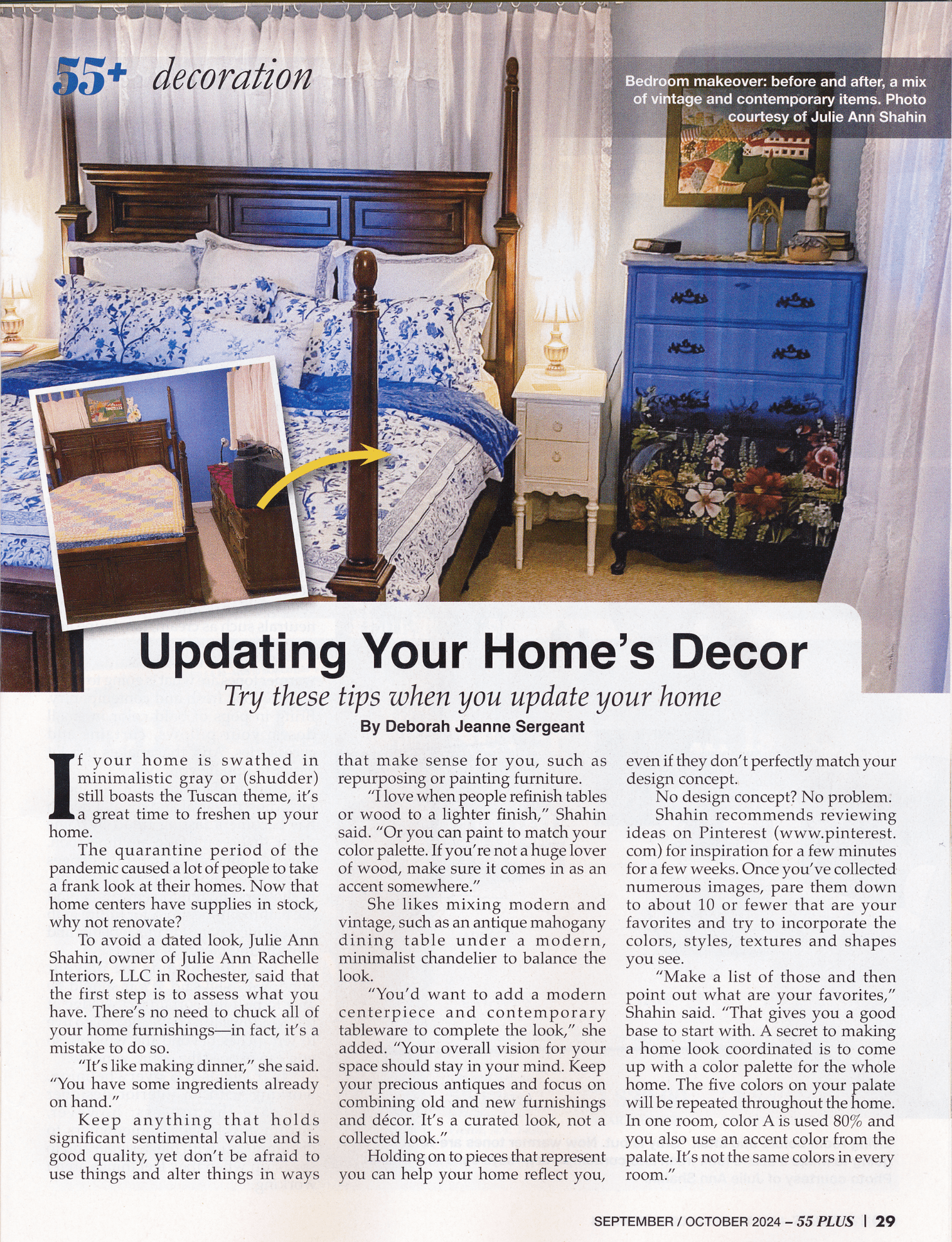
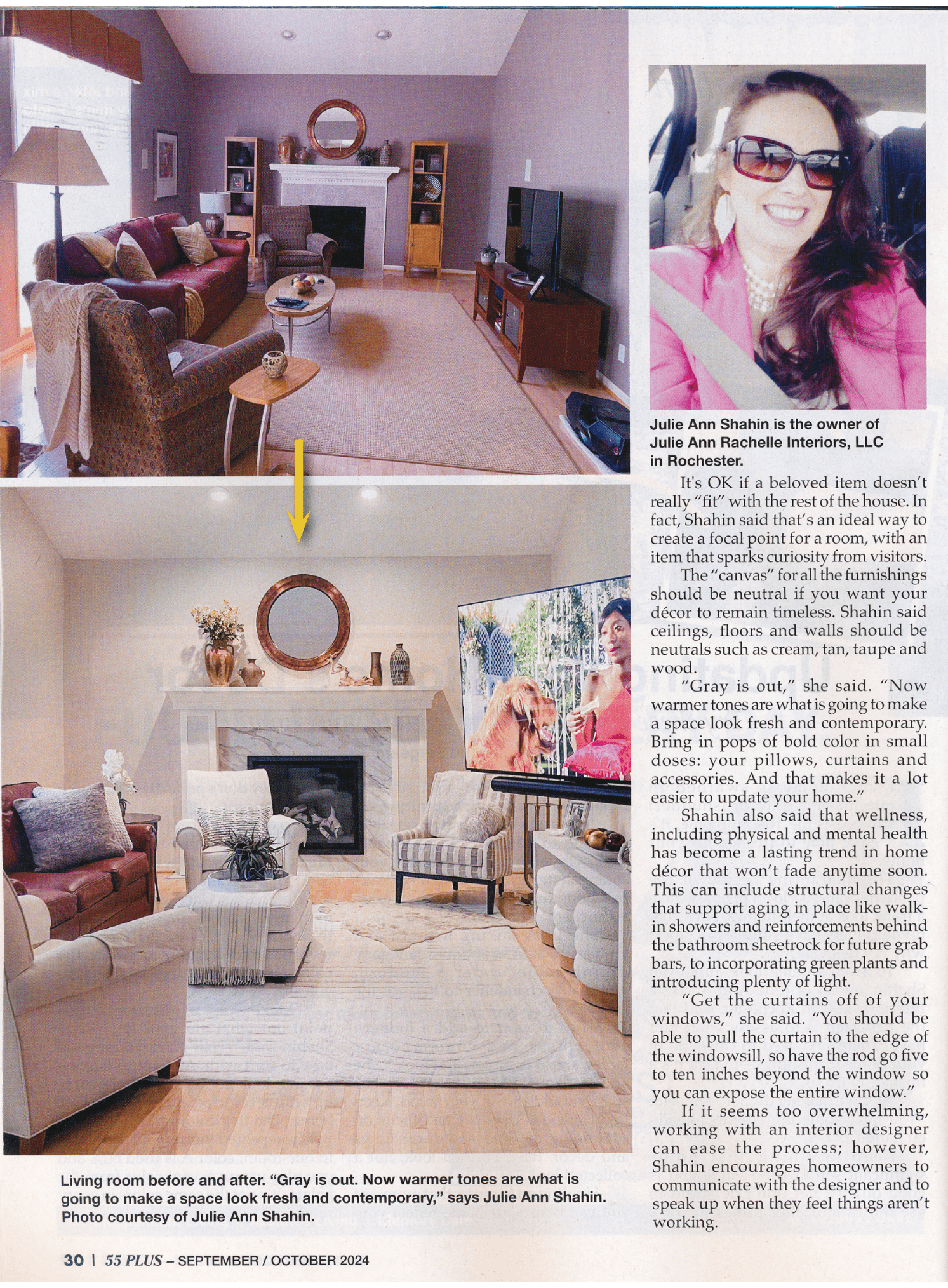



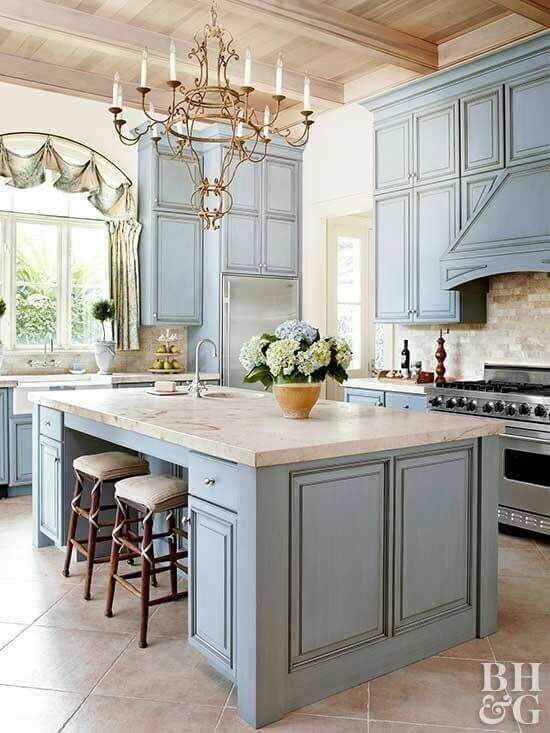





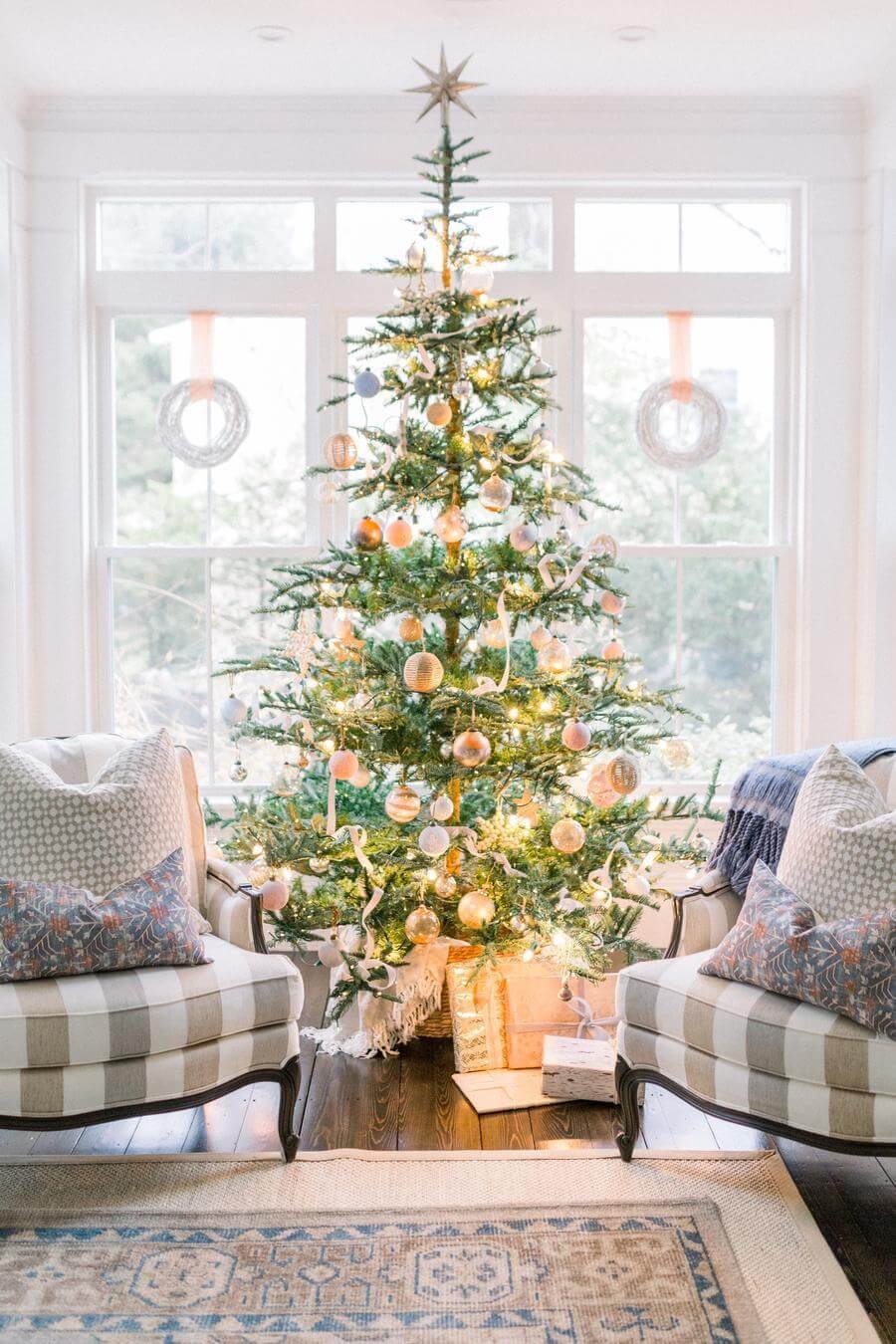
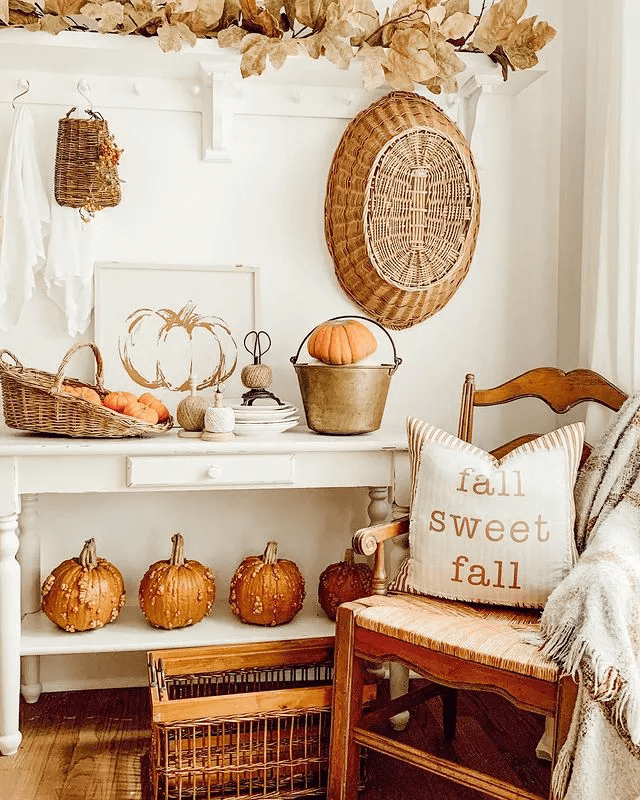

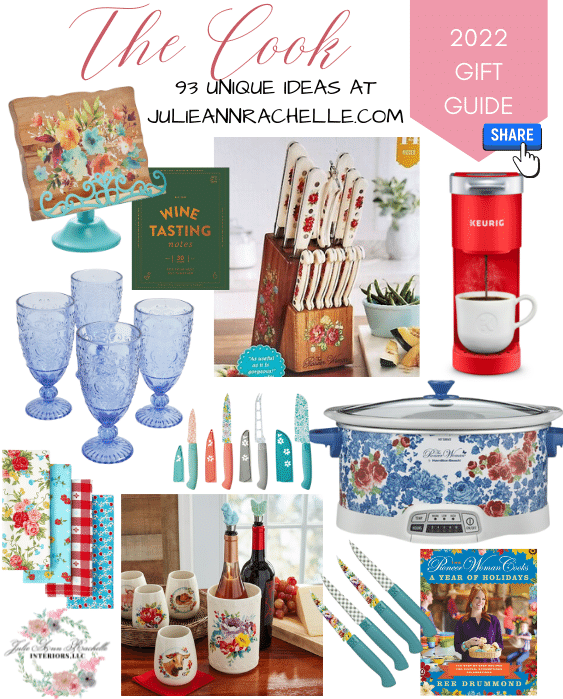


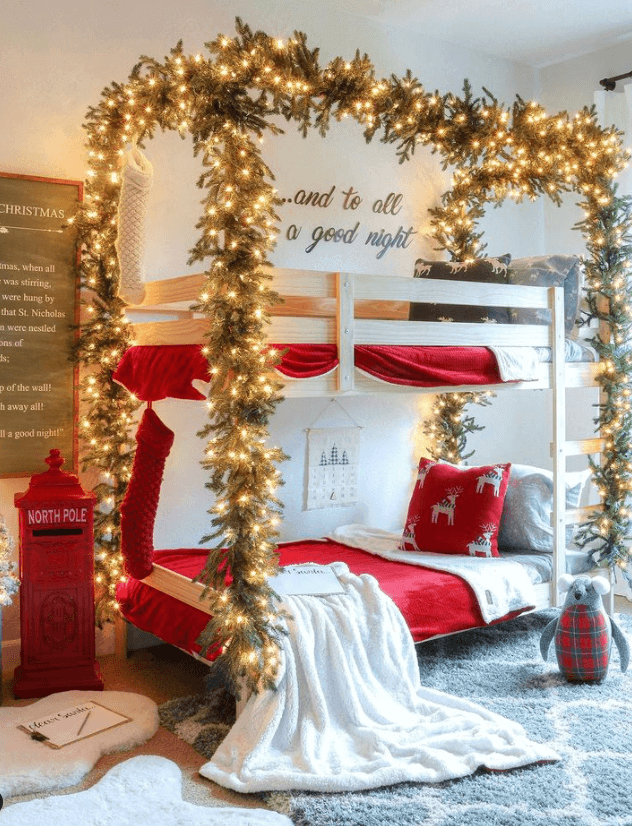








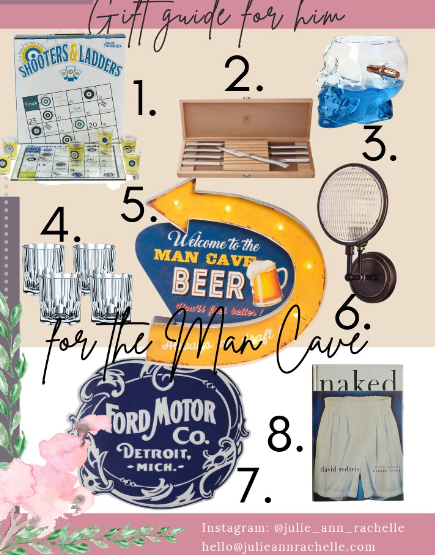

Looking for bedroom inspiration? Look no further than these romantic French country bedrooms. Get ready to be swept away by their charm and beauty.